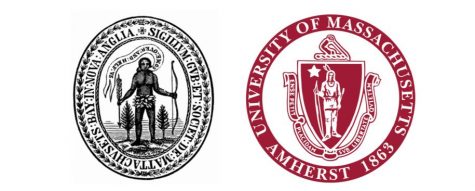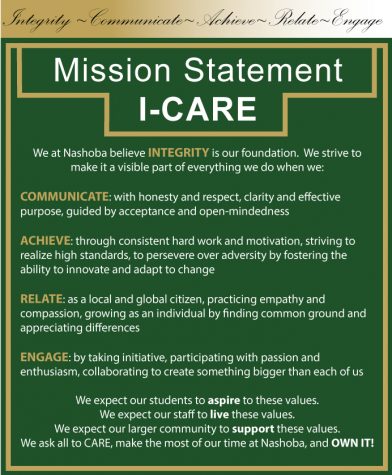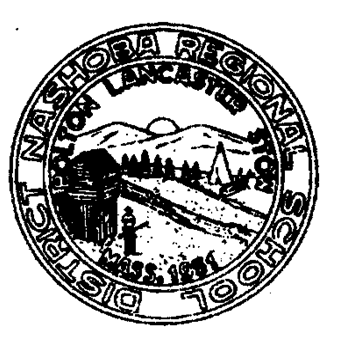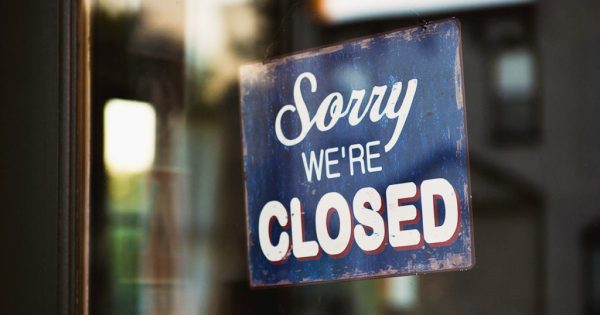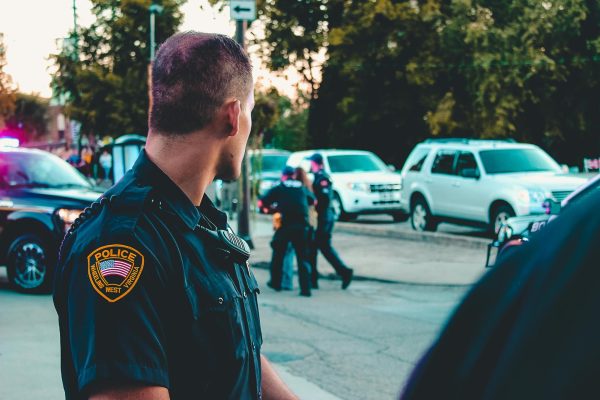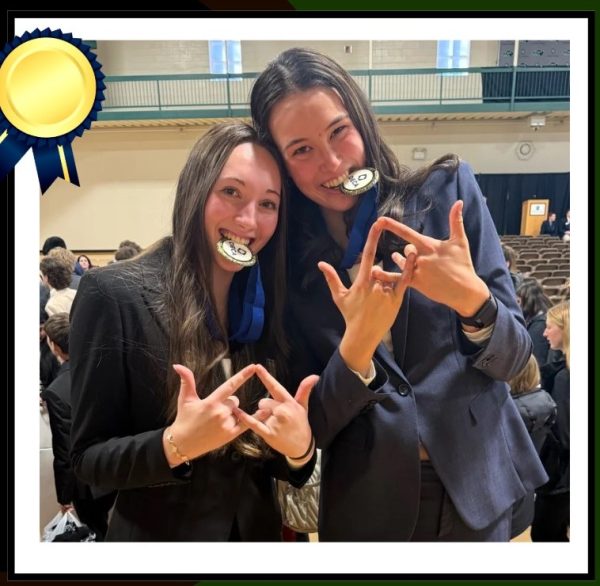The Power of Symbols
Mascots are symbols. They have no substance in and of themselves. Their meanings derive from their context and their association with a brand or community. Often, mascots are animals or objects devoid of personhood. According to Brian Cladoosby, President of the National Congress of American Indians, the indigenous youth of the United States face a “significant challenge… to maintain a foundation in their culture and language.” That challenge is compounded by “… the invisibility of Native peoples and a lack of positive images of Native cultures.” In the words of Nate Morrison, a Nashoba graduate now working with indigenous youth, “the Chieftain imagery is not something we can be proud of. I was blind to it when I was a student at Nashoba, but now I realize how offensive it is.” Symbols like mascots are meant to inspire unity and pride. They should not be sources of regret, or worse, shame.
This past summer many of us watched with amazement and relief as the South Carolina legislature voted to remove the Confederate Battle Flag from the grounds of the state house. The flag has had a complicated history in the United States. For some, it symbolized pride in one’s heritage and the valor of previous generations of American soldiers. For others, it was a painful reminder of slavery and a symbol of racial hatred. The decision to raise the flag in 1962 reflected this ambiguity. Was it designed to commemorate the one hundredth anniversary of the Civil War, or did the all-white legislature instead want to mark their resistance to the Civil Rights Movement and the increasing steps of the federal government to protect the rights and dignity of all Americans? Dylan Roof’s brutal slaying of congregants at the historic African American Church in Charleston exposed a truth – for too many, the flag was a symbol of white supremacy and racial animosity. In a rapid and bipartisan turn of events, the flag was consigned to a museum.
The lowering of the flag has prompted some in New England to celebrate their moral superiority over southerners or revel in a final victory for a 155 year old Civil War. We, however, should ponder whether we have adequately removed symbols of racism and intolerance from our New England midst. As the Gospel writers have suggested, “Don’t criticize the speck in your neighbors’ eye before removing the plank from your own”. Unfortunately, moral hypocrisy has been far too common in New England history. We campaigned for abolition while quietly burning the records of family fortunes made through the slave trade. We endowed colleges and universities with money from slavery, and our burgeoning textile mills processed slave grown cotton to sell “slave cloth” back to plantation owners. Northern shippers, bankers, and insurance companies provided services for the slave economy. New Englanders protested conditions on southern plantations while ignoring the degrading conditions in neighboring textile mills. We signed petitions protesting Cherokee removal while ignoring our wars against Native Americans and our complicity in their enslavement, displacement, and the destruction of their culture.
College and university students are currently exploring these issues in Massachusetts. Students at University of Massachusetts at Amherst are questioning whether the school’s current seal which depicts a disembodied arm holding a sword over the head of a Native American is respectful to that community. The seal is derived from the earlier seal of the Massachusetts Bay Colony which depicts a half-naked Native American appealing to the English to “Come over here and help us.” Students and faculty at Amherst College are demanding that the college drop the mascot, “Lord Jeff,” due to Lord Jeffrey Amherst’s participation in biological warfare, sending smallpox infested blankets to Native Americans during the French and Indian War. Harvard University recently dropped the title “house master” for faculty advisors of residence halls due to its association with slavery.
In recent years students in the Nashoba Community have increasingly raised concerns about our Chieftain mascot. In 2013 Alex Ablavsky raised the issue in his valedictory speech. A number of teachers were recently contacted by alumni who have worked with Native American youth in New Mexico about their concern of the inappropriate use of Native American symbols at the school. As educators at Nashoba Regional High School, many of us have come to share the concerns raised by these students and alumni.
In 2005 the American Psychological Association released a position statement in which they requested that all schools immediately retire Native American mascots. Numerous psychological studies have demonstrated the harm that these symbols cause, specifically by:
- “Undermining the educational experiences of members of all communities-especially those who have had little or no contact with Indigenous peoples. . . .
- Establishing an unwelcome and often times hostile learning environment for American Indians students that affirms negative images/stereotypes that are promoted in mainstream society. . . .
- Undermining the ability of American Indian Nations to portray accurate and respectful images of their culture, spirituality, and traditions. Many American Indians report that they find today’s typical portrayal of American Indian culture disrespectful and offensive to their spiritual beliefs.”
In addition, they have concluded that [the use of] Native Mascots:
- “Presents stereotypical images of American Indians
Such mascots are a contemporary example of prejudice by the dominant culture against racial and ethnic minority groups. - Is a form of discrimination against American Indian Nations that can lead to negative relations between groups.” http://www.apa.org/pi/oema/resources/indian-mascots.aspx
The clear findings of the American Psychological Association suggest that Nashoba’s continued use of the Chieftain mascot and associated iconography and activities violates the district’s positive climate and bullying prevention and equal education opportunities policies:
“NRSD POSITIVE CLIMATE /BULLYING PREVENTION AND INTERVENTION POLICY: “Bullying” is the repeated use by one or more students or by a member of a school staff including, but not limited to, an educator, administrator, school nurse, cafeteria worker, custodian, bus driver, athletic coach, advisor to an extracurricular activity or paraprofessional of a written, verbal, or electronic expression, or a physical act or gesture, or any combination thereof, directed at a target, a student(s) against whom bullying, cyber-bullying or retaliation has been perpetrated, that:
- Causes physical or emotional harm to the target or damage to the target’s property;
- Places the target in reasonable fear of harm to him/herself, or of damage to his/her property;
- Creates a hostile environment at school for the target;
- Infringes on the rights of the target at school; or
- Materially and substantially disrupts the education process or the orderly operation of a school.
EQUAL EDUCATIONAL OPPORTUNITIES: In recognition of the diversified characteristics and needs of our students and with the keen desire to be responsive to them, the School Committee will make every effort to protect the dignity of the students as individuals. It also will offer careful consideration and sympathetic understanding of their personal feelings, particularly with reference to their race, creed, gender, gender identity, religion, nationality, and physical and intellectual differences.
Along the same lines, the use of the Chieftain Mascot queries the Mission Statement of the school. How can integrity be our foundation if we accept the denigration of other cultures? How can we communicate with honesty, respect, acceptance, and open-mindedness while appropriating the iconography of a defeated and displaced people? How does the use of the chieftain demonstrate that we are relating with empathy, compassion, and the acceptance of differences? Would we not better embody the Nashoba mission by engaging these issues and together seeking a new mascot?
In a recent editorial in the New York Times Ramona Peters, the historic preservation officer for the Mashpee Wampanoag tribe, wrote, “Native people don’t appreciate others culturally cross-dressing and mimicking what they believe we are like. Stereotypes like the tomahawk chop begin at an early age because of this ill-thought pageantry.” (http://www.nytimes.com/roomfordebate/2015/11/25/rethinking-the-way-we-teach-thanksgiving/a-national-holiday-to-simply-express-thanks) If we hear the voices of Native leaders questioning our actions, and we do not change our behavior, are we not just continuing the legacy of nearly 400 years of colonial exploitation and conquest?
Some, including a few local Native leaders, have suggested that the sustained use of Native Mascots is acceptable so long as it is done respectfully. Careful reflection, though, reveals that respectful cultural appropriation of other cultures’ symbols cannot be done consistently well. Either through ignorance or apathy, we have and will cross the line of appropriate behavior and gestures. For about sixty years the United States ran an experiment with “separate but equal” education. As an abstract idea, it may be possible to have segregated education with equivalent instruction and materials. As the Supreme Court correctly ruled in Brown vs. The Board of Education, however, separate education was fundamentally unequal in the United States. In the same way, appropriating Native culture by a dominant white culture will always be disrespectful. To quote Chery Toney Holley, the current chief of the Nipmuc Hassanamisco Reservation in Grafton, MA: “We do not support Native mascots. We are people, not characters or historic figures. We do not believe that Native mascots honor us in any way.”
One year before the South Carolina Legislature voted to raise the Confederate Battle Flag over the state house, a group of sixteen students from Bolton, Stow, and Lancaster met to plan policies for Nashoba Regional High School in preparation for its opening the following year. They determined a dress code which included language barring girls from wearing “slacks or bermudas” to school and encouraging them to “wear nylon instead of bobby socks” to school dances. Boys were banned from wearing “pegged and striped trousers,” “dungarees,” and cowboy or hunter boots. Extreme haircuts including “side burns and ducktail haircuts” were similarly forbidden. The same group that passed that now long forgotten dress code also chose the Chieftain as the school mascot. Careful research has been unable to determine the thinking behind the choice. Clear evidence does exist, though, of disrespect by many in the communities in their attitudes toward cultural and racial minorities. In the 1950s Bolton hosted “minstrel shows.” A minister, speaking at Lancaster’s three hundredth anniversary celebration in 1953, described Native Americans as savage and barbarous “red men.” The local congressman referred to Natives as “savage” and “merciless,” and described how they “slaughtered in cold blood” the English settlers. These examples were a scant thirty years after both Lancaster and Stow were racked by riots in which local Klan members fought against immigrants from nearby industrial cities.
Fortunately, our community also has many counter examples of acceptance and inclusion. In the 1920s Stow hosted a national golf tournament for African Americans. In recent years the school community has made tremendous progress through the Best Buddies program of promoting acceptance of individuals with intellectual challenges through their “Spread the Word to End the Word Campaign.” The Gay Straight Alliance club has successfully promoted the rights and dignity of LGBTQ students. We need to build upon these successes to become an even more inclusive and welcoming community.
Efforts have been made in the past fifteen years to address the mascot and associated iconography. The district’s old logo, which depicted a settler holding a musket in the direction of a Native American, was retired in favor of a more appropriate seal. The chieftain headdress was replaced by the N with the spear through it. Yet, we are still left with the cultural appropriation of a symbol of a defeated culture, even if that symbol is arguably somewhat less offensive. Band members and cheerleaders still perform the Chieftain Chop in which students make a motion reminiscent of scalping with a Native tomahawk. Surely, we can provide more appropriate and respectful symbols, mascots and rituals to celebrate the many achievements of our student athletes. Isn’t it time to chart a new and more inclusive mascot that truly reflects the values, mission, and policies of the school district today?

